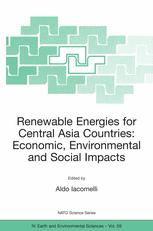

Most ebook files are in PDF format, so you can easily read them using various software such as Foxit Reader or directly on the Google Chrome browser.
Some ebook files are released by publishers in other formats such as .awz, .mobi, .epub, .fb2, etc. You may need to install specific software to read these formats on mobile/PC, such as Calibre.
Please read the tutorial at this link: https://ebookbell.com/faq
We offer FREE conversion to the popular formats you request; however, this may take some time. Therefore, right after payment, please email us, and we will try to provide the service as quickly as possible.
For some exceptional file formats or broken links (if any), please refrain from opening any disputes. Instead, email us first, and we will try to assist within a maximum of 6 hours.
EbookBell Team

0.0
0 reviewsIn the last few years, awareness and worries about the exhaustion of natural resources are increasing, but this fact is still very much discussed about its analytical measurement, and therefore not yet demonstrated. However, what has been demonstrated is that the 6 billion inhabitants of the Earth move every kind of goods and wares around the world at about 8 tons per capita, which means about 50 billion tons per year. This is the same amount as is moved yearly by natural forces, such as winds, eruptions, earthquakes, rain.
Since the Kyoto Protocol entered into force on 16 February 2005 an investment on rational use of energy, savings and efficiency is the main premise supporting the development of new energy sources needed to meet the target of the KP and UNFCCC. If energy consumption decreases, renewable sources could cover a significant part of the demand of energy (in particular electricity), if consumption remains uselessly high because inefficient and less energy-consuming (acting also on final uses), renewable energy would become a reality, a feasible method even in these sectors. With investments being equal (today all in the sector of generation from fossil sources), if there were parallel researches on how to reduce consumption and wastes considerably (at least 35%) and on power plants from renewable sources, there would be also a reduction of gas emissions, without any negative influence on development.
New technologies (and new "energy products") will play a crucial role in the development of a market of "sustainable energy products" that should grow in a competitive way (cost-effective) to stand against the challenge of change.